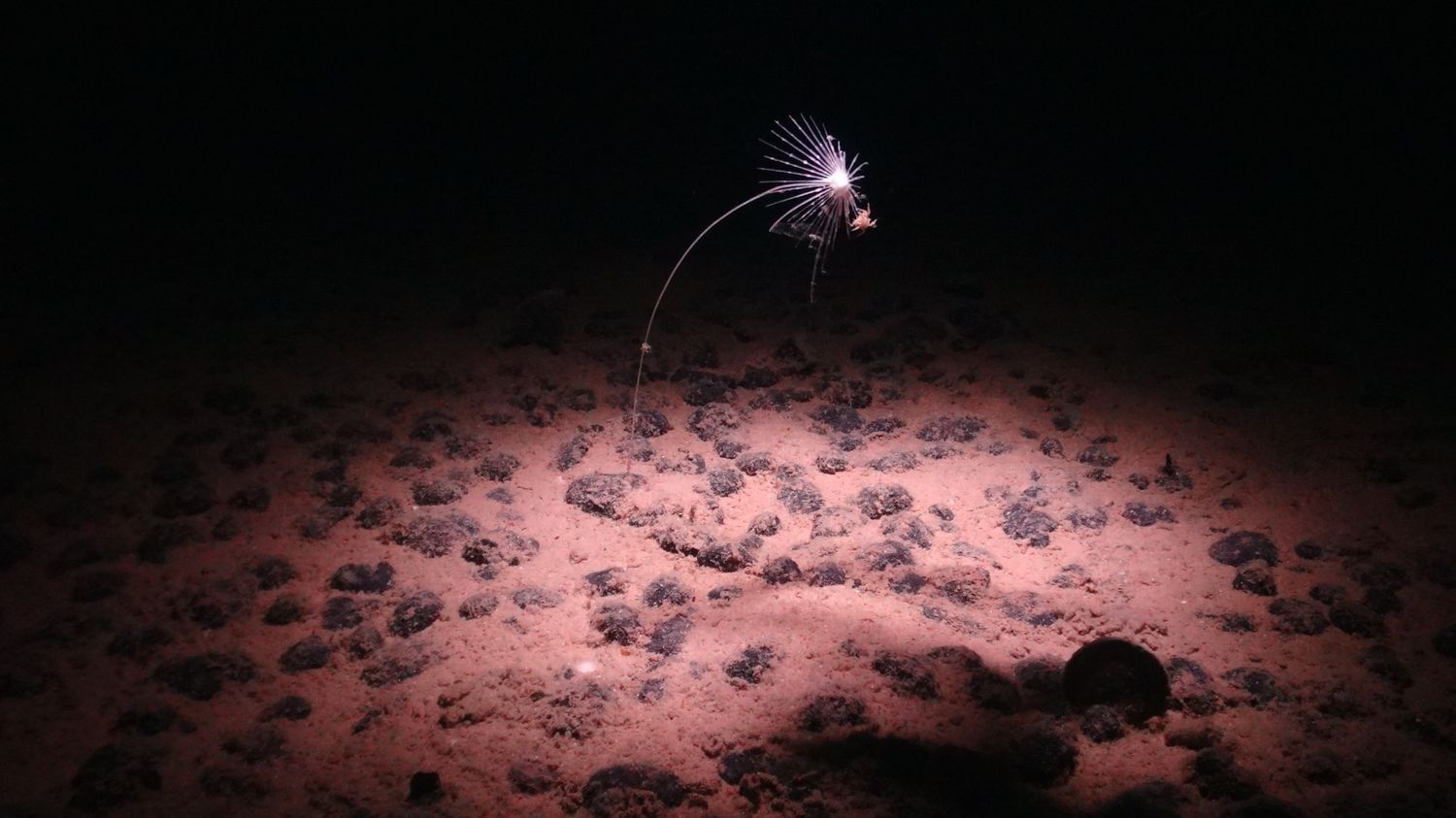This oxygen is produced not by living beings, but by a kind of pebbles containing metals. It could be the result of a process of electrolysis of water.

Published
Reading time: 2 min

A stunning discovery. In the depths of the Pacific Ocean where darkness is at its most complete, scientists have discovered the existence of oxygen coming not from living organisms but from a kind of pebble containing metals. This strange “black oxygen” was detected at a depth of more than 4 kilometers, in the abyssal plain of the Clarion-Clipperton geological fracture zone, according to a study published Monday, July 22 in Nature Geoscience.
This area is a prime target for underwater mining due to the presence of polymetallic nodules, mineral concretions rich in metals (manganese, nickel, cobalt, etc.) needed in particular for the manufacture of batteries for electric vehicles, wind turbines, photovoltaic panels and mobile phones.
It was within this area that a vessel from the Scottish Association for Marine Science (SAMS) took samples. “We were trying to measure oxygen consumption” from the ocean floor, by placing its sediments under bell jars called benthic chambers, explained Andrew Sweetman, first author of the work published in Nature GeoscienceLogically, the seawater thus trapped should have seen its oxygen concentration decrease, as the latter was consumed by living organisms at these depths.
However, the opposite was observed: “The oxygen level increased in the water above the sediments, in complete darkness and therefore without photosynthesis,” “The surprise was such that the researchers initially thought their underwater sensors had made a mistake. They conducted experiments on board their ship to see if the same thing was happening on the surface, and found once again that the oxygen level was increasing.
These astonishing properties could be at the origin of a process of electrolysis of water, which separates its molecules into hydrogen and oxygen using an electric current. This chemical reaction occurs from 1.5 volts, the voltage of a battery, which the nodules could reach when they are grouped together. “The discovery that oxygen is produced by a process other than photosynthesis prompts us to rethink how life appeared on Earth.”linked to the appearance of oxygen, comments Nicholas Owens, director of SAMS. The vision “conventional” being that oxygen “was first made about 3 billion years ago by cyanobacteria which led to the development of more complex organisms”.
